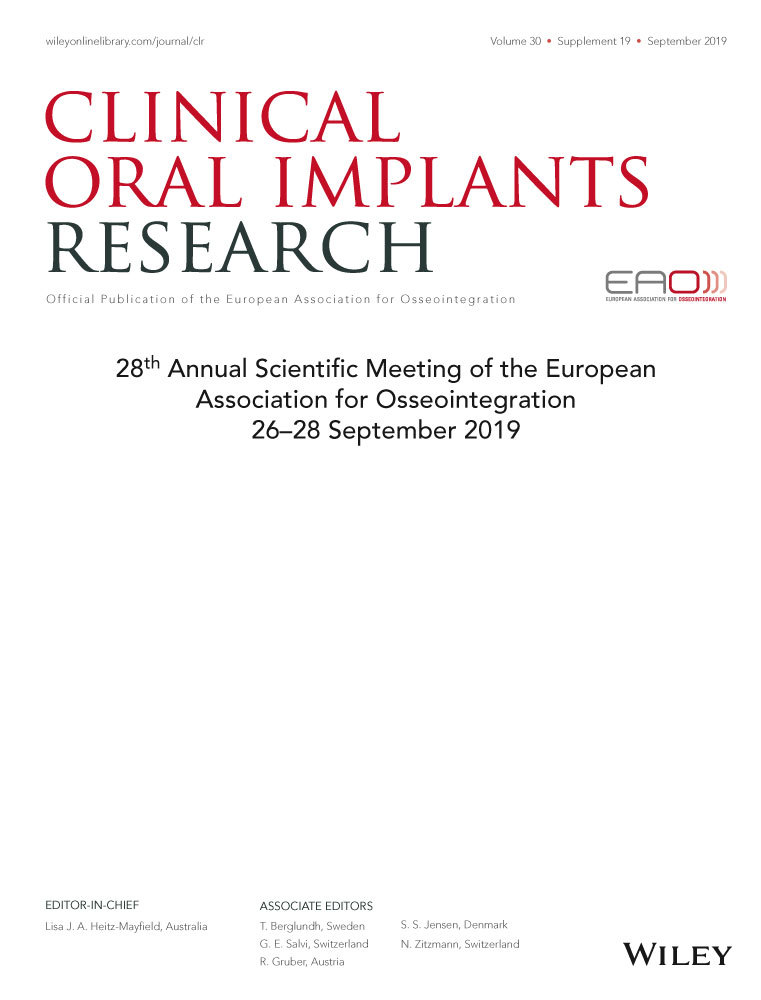Evaluation of four different titanium surface treatment on the bone healing in defects filled only with blood clot – A experimental animal study
16330 POSTER DISPLAY BASIC RESEARCH
Background
Among the modifications in the sense of improving tissue response, surface treatment of implants has received more attention and is one of the most researched topics. Since the first portion of an implant to interact with the patient's tissues after implantation is the surface of the implant where direct contact occurs with the blood and consequently with its cellular components and growth factors.
Aim/Hypothesis
The aim of the present histologic animal study was to analyze whether roughness of the titanium surface can influence and or stimulate the bone growth in defects filled with the blood using a rabbit tibia model.
Material and Methods
Forty sets (implant and abutment), dental implant (3.5 mm in diameter and 7 mm in length) plus healing abutment (2.5 mm in diameter) were inserted in the tibiae of 10 rabbits. Moreover, twenty titanium discs were prepared. The abutment and discs were treated by four different methods and divided in four groups- (group A) machined abutments (smooth) + (group B) double acid etching treatment+ (group C) treatment with blasting with particles of aluminum oxide blasted plus acid conditioning (group D) treatment with through blasting with particles of titanium oxide plus acid conditioning. The discs were used to characterize the surfaces by a profilometer and scanning electronic microscopy.
Results
After 8 weeks, the new bone formation around the sets of the samples were analyzed qualitative and quantitatively in relation to bone height from the base of the implant and presence of osteocytes. In the group C (1.50 ± 0.20 mm) and group D (1.62 ± 0.18 mm) showed bone growth on the abutment with higher values in compare to group A (0.94 ± 0.30 mm) and B (1.19 ± 0.23 mm), with significant difference between the groups (P < 0.05). In addition, osteocyte presence was higher in groups with surface treatment related to machined (P < 0.05).
Conclusion and Clinical Implications
Within the limitations of the present study, it was possible to observe that there is a direct relationship between the roughness present on the titanium surface and the stimulus for bone formation, since the presence of larger amounts of osteocytes on SLA surfaces evidenced this fact. Furthermore, the increased formation of bone tissue in height demonstrates that there is an important difference between the (physical chemical) methods used for surface treatment.




